Contact Art:
It shatters the dream of the artist as recluse.
It shatters the dream of control.
It shatters the dream of a happy retirement.
It is the reality of now.
Borders are broken.
Flux is celebrated.
Participatory art shatters our inherent narcissism.
The world is not in my perfect control.
Borders are broken.
Flux is celebrated.
Participatory art shatters our inherent narcissism.
The world is not in my perfect control.
I get the excitement of having to cope. The surprise of the unexpected. The sense of the heightened reality of the unrehearsed moment in the specialized context called art. The grating nerves of the conditioned expectation or contextual framework set against the situation of nov-elty, a cognitive dissonance that is an utterly unique experience.
Considering the issue of participation as a qualifying characteristic of contact art, one has to point out that the onset of such work in contemporary art history arose from a major change in world view. Something happened in 1960 give or take a few years. The power of that period was a great awakening sense of Liberty. The individual suddenly had the right to break forms and habits and to act in behalf of others, to be a representative vehicle, to indicate through action the potential of the human being. (If I can do such things, so can you.) The process of life, the human journey through time, became a quest. In a seeming contradiction, 1960 also brought the sense of an interconnected whole earth community and of the dissolving of boundaries between self and other, the body know-edge of our unity with all things material and immaterial, plant, animal, mineral, technological and ancestral.
As performance developed, the question emerged whether it was meant to further the ideas of separation or unity. Much of the art spoke of alienation, although its catharsis could bring on a relieved wholeness. In the cases where its form moved back to the stage and the frame, this body of artworks increasingly set itself up as distinct, thereby emphasizing the separation of subject and object, good and bad, high and low, and other judgemental discriminations that play into the hierarchical patriarchal system.
Other contact art addresses the world and audience differently in terms of form, content and function. Here a feminine matrix- from whence comes all form- is the basis of a connected universe whose members pulse between their communal being and their ego identification. For the members, the surrender to the encounter of self with other is necessary for transformation.
This performance work has change as its qualifying condition. The ac-tions, thus, are purposefully flux-oriented and ephemeral. It pursues openness, energetic clarity, and the deconstruction of old concepts and structures.
Working on this non-material level has a different theory of causation. My art seeks to operate on a pre-causal level and can radically change the realm of conditions, habits, and beliefs. In other words, I believe that my work carries direct and indirect power to effect change, operating on levels other than pragmatic, in ways that cannot be "quantified" or "proved". At times an artwork has indirect causal relationships in the world at large; at times it is totally and directly apprehended in a single moment, bypassing all filters, if the participant is ready.
Who participates? First of all, I do myself. I am the major participant and the major beneficiary of my work, the only one I can really speak for. I do these things. I do them with a certain intent. There is something very profound that happens when the body is put in alignment with belief or confronted with the unexpected. Self trust is learned and self-awareness is experienced. And information is gained that cannot be verbally expressed.
Who is the art for? I do it to satisfy my own needs, explorations and curiosities and my own inner directed development. I believe it can also affect or benefit others, giving participants the experience of sensing themselves in a preformance context, or seeing me do or try to do things I believe. Primarily a non-verbal manipulation of signs, colors, sounds, forms, and symbols in unusual structures, it invites the courage of participation with me in the piece. The literal physical contact made by being in and doing this art is like the body-level grounding and incorporating that happens to the crawling infant, who learns and thus masters a world not so much by language but through the physical senses.
The integration of body and mind is my goal through the breath of spirit.
• • •
GROUND ZERO
I recently completed a piece in the community I live in, Venice, California. For sixteen days I walked along eight mile-long routes radiating from the Social and Public Art Resource Center (SPARC). I went to every door, business or residence. For me and my assistant it was a series of constant surprises of getting to know this community in depth in ways I never otherwise would.
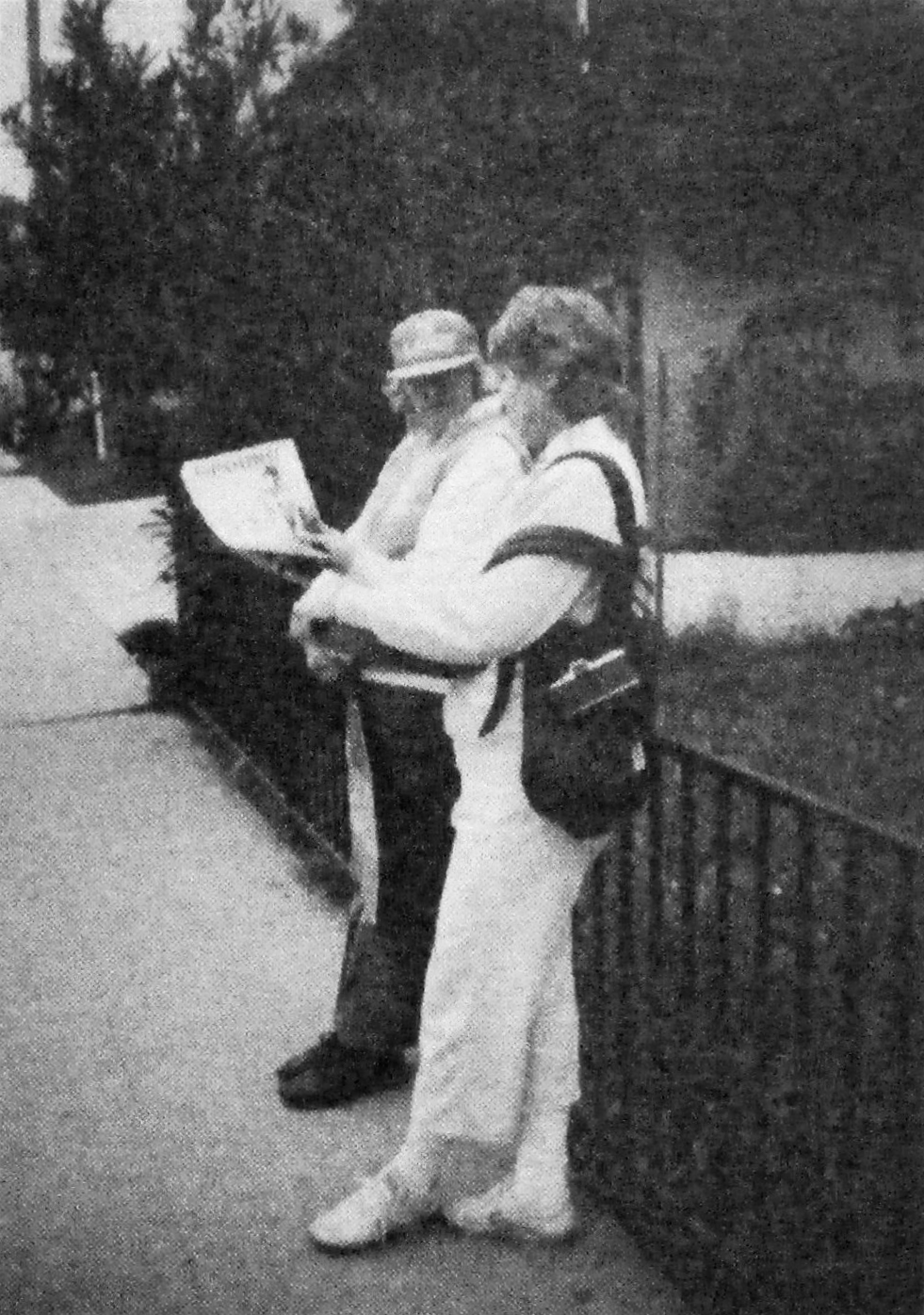
Ground Zero: Yellow Spoke. May 6. 1989. Trish Doherty.
I was offering a gift, a free art event, and I invited them to participate in a procession along each color-coded ray toward SPARC on an evening in May. There the assembled participants would "circle the world" led by their radial guides and come into a ceremonial space at whose center GROUND ZERO I sat.
I had been preparing a long time for this piece, taking in all that I had learned of community strife and fears (including gang violence, drugs, gentrification, and ecological calamities). I had fasted and lived in the gallery space meditating on these issues. I asked myself the question; where is that abject fear of helplessness and its concomitant killer reaction in myself? For I realized I am not separate from nor above the construct that sets up GROUND ZERO. Each day I'd put on the walls the gleanings of scraps and photos and written texts from each ray that I walked and saw there the accumulated expressions of my town. And so I compounded my own sense of insecurity and helplessness with those of my community, while I sought to find an answer to the kill/or be killed / or kill myself syndrome.
In the performance circle of the May night (the ancient time of Beltane May poles and Cinco de Mayo), in solidarity with the nature-worshipping tribal cultures of the world, the earth people who had for centuries been oppressed for valuing the living earth and the female snake energies, the witches and gay men who were tortured and burned (from whence the name "faggot" derives) in the midst of a culture desiring to suppress all female powers and behavior, I began first to hear and take on the woes of the community, surrounded by the fires of transformation. Then I began to dance out of the void of death, to return the feminine undulating sensuality and powers to heal, to help end the domination of one group over another. I wore sequins and a flowing gown. However, more than an erotic dancer, I became the indominable spirit of life, and I was joined by my community in this rite.
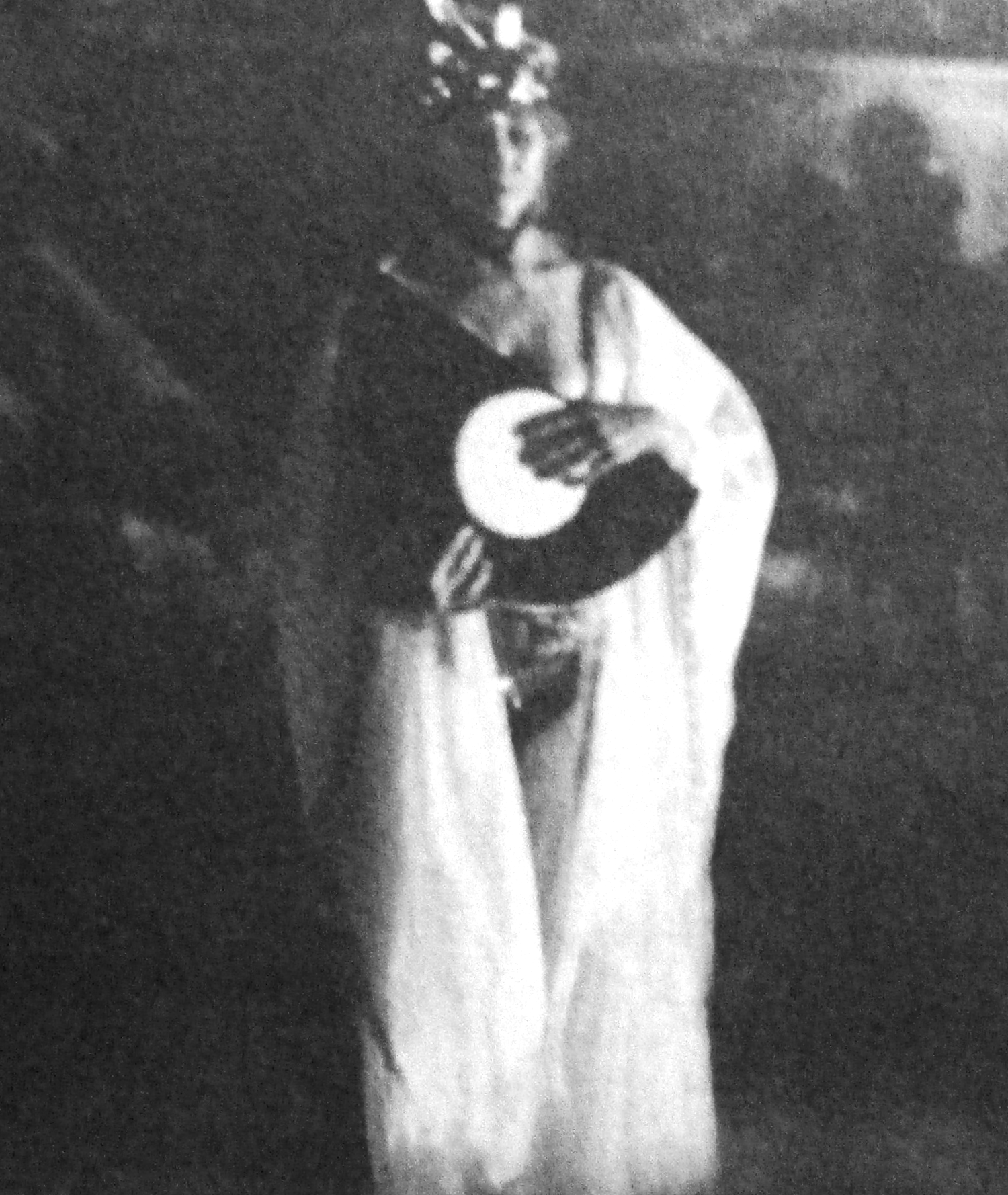
Ground Zero: Yellow Spoke. May 6. 1989. Dave Friedman.
•
THE PAGEANT OF THE HOLY SQUASH
This last winter on the solstice, I created a performance at Fashion Moda in the South Bronx and at the Cathedral of St. John the Divine, New York City. I chose these sites because they are not commercial art galleries but are significant institutions in the broader context of where they are. For a month I was on site at Fashion Moda, confronting and creating in a neighborhood where cab drivers refused to go. By being there, I began to feel I understood where and how it is "safe" and "not safe" on the streets and got rid of my expectations. There, I created a pageant and tableau. The piece on December 21, at the Cathedral, was a gentle parody of church and school manger scenes, but the issue was ecological.
A Farmer and a Cook carrying gigantic Hubbard squash wander among the audience seeking a place to lay their "child." They find this place in Fashion Moda's storefrond window. First speaks a Shepherd who had heard about the giant Holy Squash and brings with him some local Bronx kids "to see this thing which had come to pass." The three "magi" follow, three women. In tribal dress Twylah Nitsch, a Seneca elder and medicine woman speaks of the ancient prophesies and teachings and the wisdom of the squash. Olean For, who has created a wonderful public garden in the East Village and works to help adopt abandoned buildings for housing, speaks of the dangers of our times and the choice we all face of life or death. And Arlene Raven, the feminist critic and historian, speak of the importance of art that goes beyond the boundaries of the ordinary art audience to create measurable social change. Following a litany of squash lore from ancient times to the present, recipes and gardening tips by Cook and Shepherd, the Farmer splits open a squash pinata scattering seed packets with planting instructions for all to have.
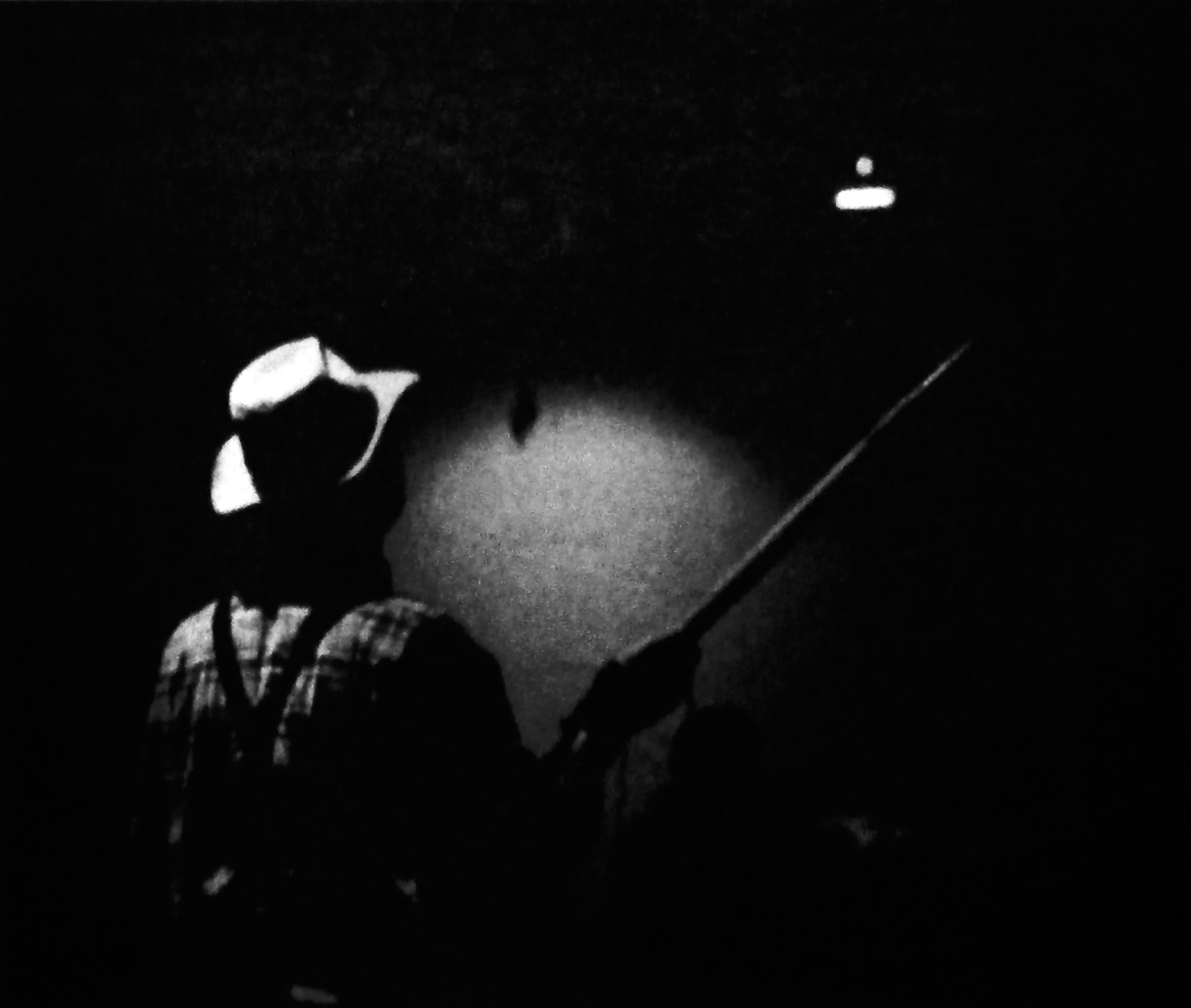
Nativity: Pageant of the Holy Squash. December 21, 1987. Alexis Grey.
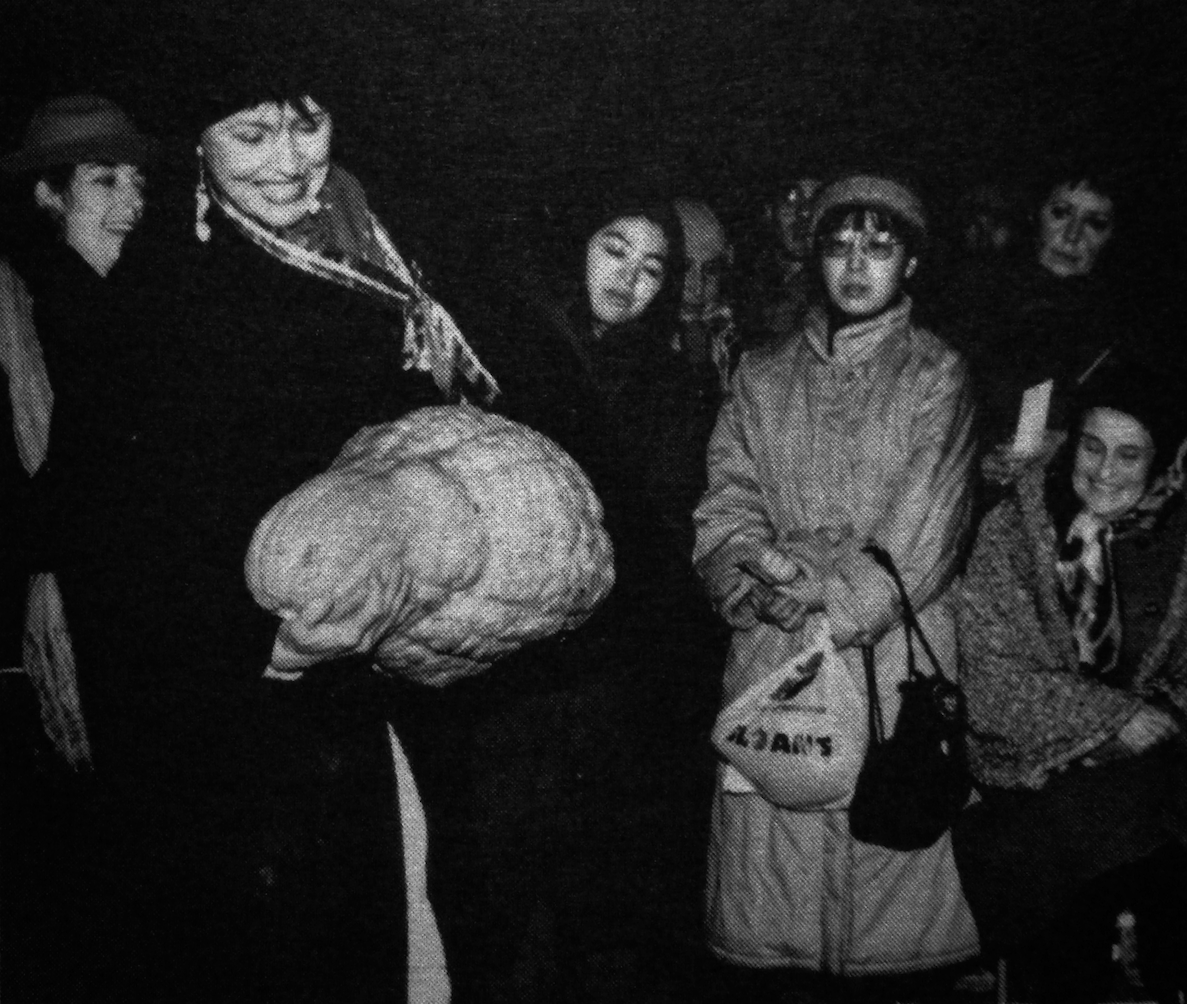
Nativity: Pageant of the Holy Squash. December 21, 1987. Andrew Sciaulino.
The next day this huge Holy Squash was carried to the Cathedral through the streets of the South Bronx and Harlem in a celebratory procession. Four men bore the Squash on a canopied litter surrounded by colorful banners, special music, a large "bride of the world" puppet, and shamanic actions for protection and healing. A permanent tableau remained in the Fashion Moda window. In both situations, random people on the streets were told of the meaning of this symbolic artwork and offered squash seeds to plant.
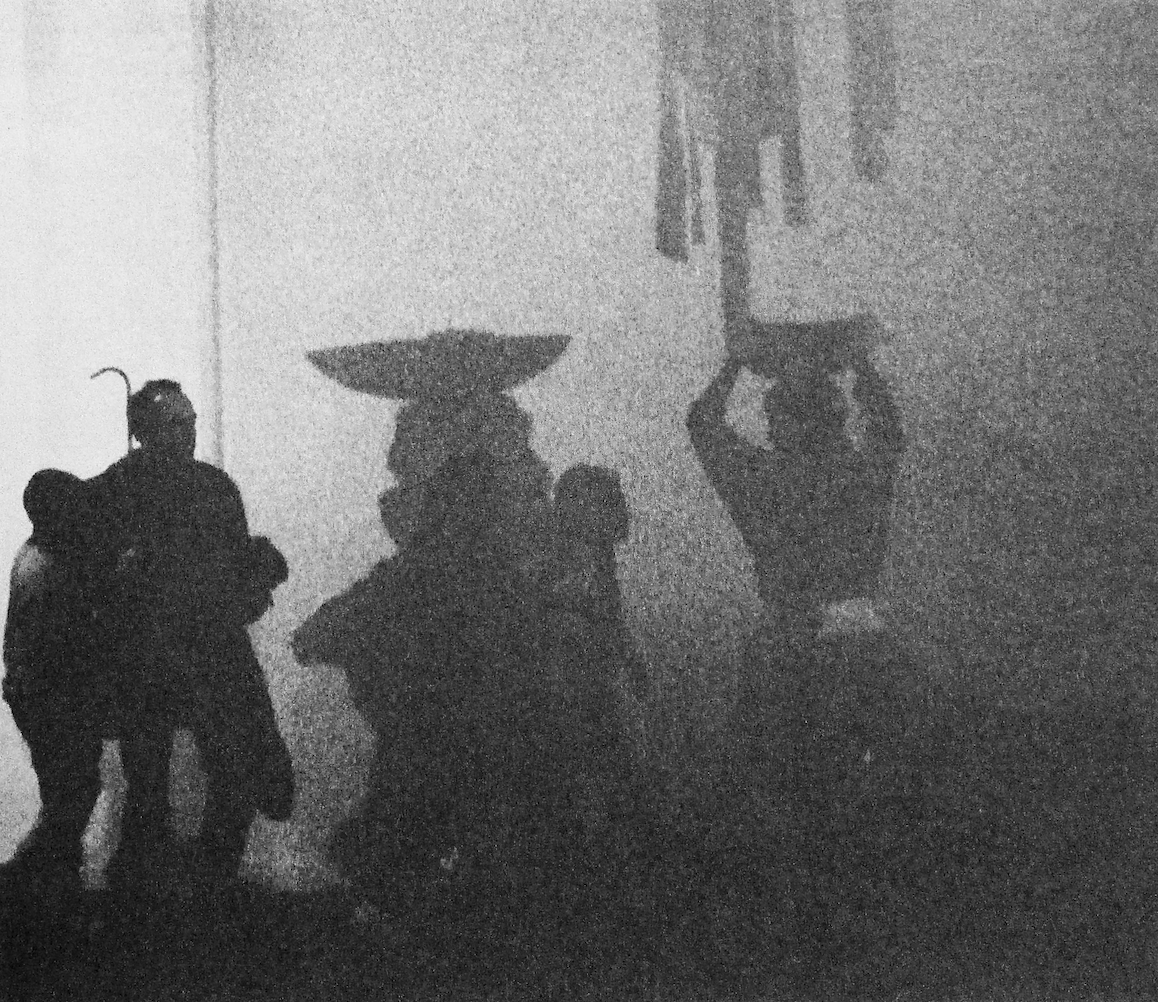
Nativity: Pageant of the Holy Squash. December 21, 1987. Alexis Grey.
At the cathedral on a very cold winter solstice night, many people gathered to perform a "pagan" art rite of renewal on this, the darkest night of the year. Honoring the squash and Mother Nature as our source, both of life and nourishment, all the participants put their own small squashes on the fire along with the huge Holy Squash. It was a ceremony reminiscent of tribal rites everywhere, but we were doing it for our own health and healing, for own need to invoke the spirits of life for a viable future. (I was joined in this performance structure throughout by my friends, other performance artists and new colleagues, who as participants, not actors, generated with me the energies of the piece.)
• • •
Artists have always keenly felt the pains and ills of the culture. They often act as hypersensitive "antennae", the first to pick up the vital issues facing society. In an era when popular art is expressing a nihilistic emptiness and symbols devoid of meaning, it is incumbent on other artists to sense where new sources of vital energy abide... In this way, artists act as spokespeople for the earth, through their lives and their artworks.
My work has continued from a feminist perspective to address issues of food and sexuality, spirituality, meaning and symbology. At this point I presume to guide others in shamanic healing rites. Where I go now is anybody's guess; in the art/life dialog there is always the possibility of becoming invisible in the fabric of culture, but it will follow the way of my quest.
The intent of such participatory work now is to seek a new course and sense of survival. To slow things down and shift ourselves to life. To be willing to give up artificial needs and attain a simplicity of means. To have a solidarity with people everywhere. To have a sense of local community which guides us to appropriate acts at appropriate times in appropriate scale. To the realization that ethical or right action performed anywhere can affect anywhere. One only needs to step in and act where the situation presents itself and alchemy or magic is performed.